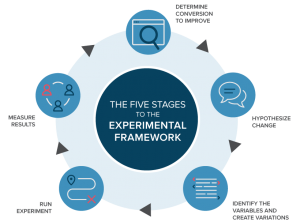September 17, 2016

Today’s corporate lexicon flows with words like innovation, speed, agility, expansion, reinvention and change. We even borrow acronyms from the realm of social media. One in particular is FOMO — the fear of missing out. Buried beneath the jargon, however, lurks a formidable beast: obsolescence. The exponential progress of the digital age has ushered in an era of incredible disruption. The status quo no longer ensures security or longevity. Obsolescence is a real threat — the signal to the noise, and it’s growing stronger. To ensure success, the choice seems to be evolve or die. Contingent workforce programs, despite their steady spread, aren’t immune. The good news is that providers who are willing to adapt and shake up their operations will prevail — and outpace their competitors.
Extinction or Evolution?
As Bain & Company’s Chris Zook points out in Harvard Business Review, five to seven percent of all businesses are free falling into decline at any given moment, or are teetering on the precipice of a sharp descent. Diving into a tailspin can happen at any point in a company’s lifecycle, Zook explains, although it most often “affects maturing incumbents whose business model has come under competitive attack from insurgents or is no longer viable in a changing market.”
Zook also references another distressing fact: “Only about 10% – 15% of those companies will ever pull out of it. Of those who do, about half have to fundamentally redefine at least a part of their core business in order to save themselves.”
When a company finds itself confronting the specter of obsolescence, it’s usually late in the game. Leaders failed to look for defects and address potential pitfalls quickly. The business wasn’t built to adapt. Processes were inflexible or too complex to accommodate shifts in direction. And when the problem is finally acknowledged, many place the blame on external factors: economic crisis, government deregulation, banking system failures and the introduction of lean, elastic competitors. The reality is that these events represent symptoms of an underlying cause, which is largely internal. Yes, they may have triggered the decline. However, that decline was made possible by an ingrained lack of adaptability.
Wearing Blinders Leads Only to Blind Alleys
In metaphor, the dodo bird persists as the icon of extinction. In business, Kodak serves as a solid substitute. Until its bankruptcy in 2012, Kodak reigned as the undisputed and long-standing master of its domain. Its downfall occurred when the company failed to anticipate and prepare for the extreme disruption of the digital photography industry. It’s ironic because Kodak engineers developed a prototype digital imaging system in 1975. The issue, as most analysts see it, arose when the organization’s leadership didn’t take the threat of change seriously, plan to evolve, prepare for external circumstances or design a next-generation solution to combat inevitable obsolescence.
In our own industry, consider the example of Monster, which Randstad purchased in August. The story illustrates, in vibrant detail, the fate of tech companies that falter: lack of ongoing innovation. Enterprises like Apple stand out from the pack because they pull off a difficult feat — innovating and then reinventing. Yahoo and Monster, on the other end of spectrum, demonstrate how hard the reinventing part can be, especially when the emphasis of business is placed on sustaining, rather than evolving, a static model.
Monster’s cautionary tale is taking shape again. TEGNA, a broadcast company, owns a 53-percent majority in CareerBuilder. On September 7, the broadcaster published a press release announcing that CareerBuilder could also be on the market: “In connection with the planned spin-off of Cars.com, TEGNA will evaluate strategic alternatives for CareerBuilder, including a possible sale.”
What happened? These job boards didn’t reinvent their solutions to satisfy new demands for mobile apps or social networking. They continued to serve the functional needs of users, based on the original model, yet didn’t look ahead and act on all the data they’d accumulated. Ultimately, others stepped in to fill that void. The signs were present, though. The industry has been discussing disruptive innovations in these areas for years. The most recent State of Contingent Workforce Solutions report by Ardent Partners and Fieldglass clearly demonstrates the trends Monster should have prepared for.
According to the report, the most impactful sources of talent acquisition are shifting away from job boards as we know them:
- Online labor marketplaces
- Freelancer networks
- “In-network” talent
- Social networks and social media
For contingent workforce program leaders, changes are also coming, precipitated by the expansion of the blended workforce. With these disruptions, contingent workforce program managers will face significant challenges that must be recognized and adapted to. The top four concerns, based on data from Ardent Partners and Fieldglass, involve data, risk, cost containment and new recruitment strategies.

Evolve Your Contingent Workforce Program: Solid Steps to Fluid Operations
After studying hundreds of organizations in periods of free fall, Bain & Company have distilled their lessons learned into some key best practices. By shaping these insights to contingent workforce engagements, program managers and leaders can stave off the threat of stagnation or rapidly correct course before time runs out.
Refresh the Team
When companies start to free fall, as Zook puts it, “you need to inject new energy into a tired organization under stress. Second, you need to ensure that the team you’re building is made up of people with open minds who want to invent the future, not just defend the past.”
For contingent workforce programs coming under the same stress, it makes sense to shake up the dynamic by replacing team members. You can’t expect the architects of outdated strategies to propel you toward a fresh path. That doesn’t imply, however, that existing managers or support staff are poor performers. It simply means they may not understand how to respond to change.
As Michael DiBenedetto writes in Entrepreneur: “Management may be unwilling or unable to change the culture of an organization — impairing the ability of the business to succeed. Management may be spread too thin and focused on too many objectives — each of which is moving too slowly to deliver positive impact.” Here are some ways to refresh the team.
- Reassign team members to programs based on their relevant skills and strengths, not necessarily specific expertise in an industry or client organization. This can foster different perspectives, new ideas and exciting approaches to improve processes or performance.
- Find leaders and employees with an adventurous spirit. Look for people in your organization who are pioneering or experimenting with unique methods for various aspects of contingent workforce program management: supplier sourcing, data analysis, unconventional metrics, onboarding, customer support and more.
- Identify potential performers and innovators from the front line and promote them.
- After realizing the need for a change, act fast and uniformly. As Zook notes, gradually transforming an existing team results in lost time, missed opportunities and the potential to repopulate the group with people who will “absorb the organizational biases of the past.”
Go Meta: Renew Focus on the Core of the Core
In his article, Zook cites Lego as a company that returned to its core during a period of decline. After diverting its attention from the phenomenal success of its toy bricks, Lego launched ventures into theme parks, television shows, video games and toys outside the niche. Nearly all of these efforts failed with consumers. In response, Lego eradicated unnecessary components, sold off parts of the theme parks, cut unrelated product lines and stopped research projects outside the core. It did, however, promote new research to enhance the capabilities, customization and consumer base of the core toys. Since that time, revenues have increased 400 percent. The same techniques can benefit contingent workforce programs.
- Strip away complexities and solutions that fail to strengthen or innovate the core offering. For instance, if you rarely deal with independent contractor compliance, cut the service out of your model. Struggling to maintain it will cost time and money. Consider partnering with a niche provider who excels at this solution. In the alliance, each of your companies may find new opportunities to share, which can lead to mutual business gains.
- Develop interesting and engaging ways to market your core offering to different prospects. Promoting diversity is an excellent start. Diverse professionals bring intimate knowledge of customers with similar backgrounds. They will play an instrumental role in helping you enhance and market your solutions to a wider audience.
- Shrink to grow. As Lego did, return to the core of your core. Shift research and development efforts to innovating existing capabilities rather than diluting your brand with unrelated services.
Invest in New Capabilities to Evolve
“Companies in free fall have a lot to fix but seldom have all of the tools they need,” Zook writes. “They usually find that they are missing at least one capability crucial for adapting their business model to new conditions.” There are many creative ways that contingent workforce program leaders could achieve the same results. Here are just a few concepts.
- Develop new capabilities for your VMS, or partner with a provider who is innovating. Leading technology companies are incorporating greater levels of functionality into VMS systems. These advances can drive your program to new heights: online recruitment modules, Statement of Work (SOW) features, machine learning, advanced analytics, freelancer management capabilities and more.
- Redesign existing onboarding programs to address new demands such as the candidate experience, more effective cultural integration, mentoring, skills development, online learning opportunities and others.
- Actively seek out staffing partners with evolutionary and disruptive recruiting models. If you’re not getting results from the incumbent supply base, it’s time to introduce some competition.
Strive to Evolve Before Needs Arise
As business analysts and academics often point out, the most successful programs will stumble or fail when they place too much emphasis on the current needs of customers. The contingent workforce leaders who thrive are those anticipating future or yet unrealized customer needs. They will embrace new technologies, refine their processes and introduce unfamiliar, disruptive service models in the absence of actual demand. In short, they will inspire and fuel that demand.
Business & Finance Articles on Business 2 Community(84)








